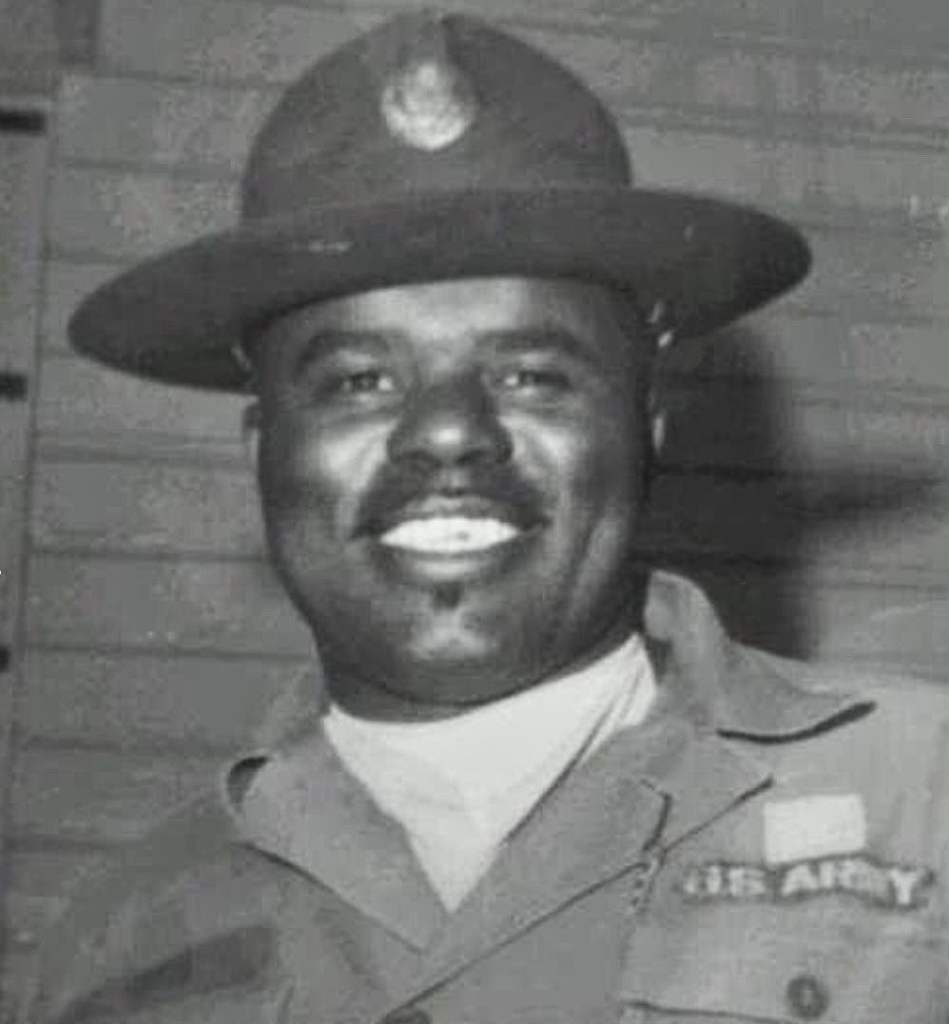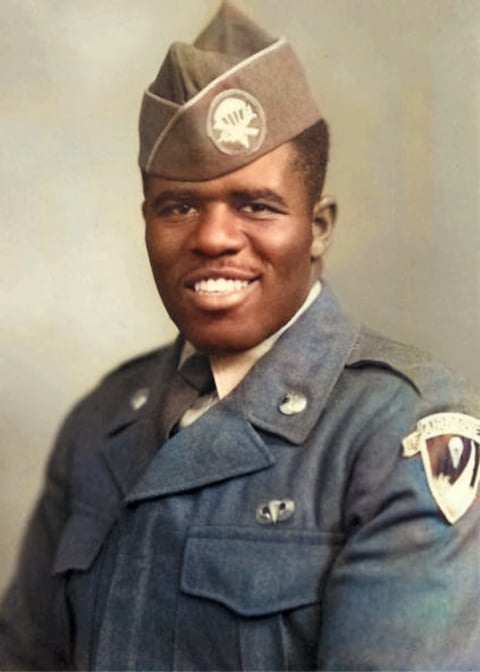The Battle for Loc Ninh: The Valor of Platoon Sergeant Joe Amos – United States Army
Loc Ninh was a small rubber plantation village in Binh Long Province—quiet, remote, and just nine miles from the Cambodian border. But in the early hours of October 29, 1967, that quiet shattered under the weight of the Viet Cong 273rd Regiment.
October 30, 2025

 Loc Ninh was a quiet rubber-plantation village in Binh Long Province, tucked amid neat rows of trees and red-clay roads, just nine miles from the Cambodian border. In 1967 it felt like the edge of the world—a sleepy frontier post whose airfield doubled as a lifeline for the Civilian Irregular Defense Group (CIDG) and their American Special Forces advisors.
Loc Ninh was a quiet rubber-plantation village in Binh Long Province, tucked amid neat rows of trees and red-clay roads, just nine miles from the Cambodian border. In 1967 it felt like the edge of the world—a sleepy frontier post whose airfield doubled as a lifeline for the Civilian Irregular Defense Group (CIDG) and their American Special Forces advisors.
But in the small hours of October 29, 1967, the stillness broke.
At 1:00 a.m., the first mortar rounds slammed into the compound. Seconds later, machine-gun fire tore through the darkness. The Viet Cong 273rd Regiment, reinforced by North Vietnamese regulars, had launched a major attack. Within moments, the jungle around Loc Ninh erupted in muzzle flashes and the crash of exploding rounds.
Inside the perimeter, the defenders—South Vietnamese troops, Montagnard irregulars, and American advisors—scrambled for cover. The airfield burned, radios crackled, and artillery from nearby firebases roared to life. For hours, the night became a shifting blur of attack and counterattack, flares casting long shadows over the rubber trees.
When dawn finally came, the Viet Cong pulled back—only to regroup in the surrounding jungle. The battle for Loc Ninh was far from over.
The “Big Red One” Moves In
 The 1st Infantry Division, the famed “Big Red One,” responded immediately. Elements of the 1st Battalion, 18th Infantry Regiment were ordered to move toward Loc Ninh and cut off the enemy’s withdrawal routes. What awaited them was not retreating stragglers, but disciplined, determined North Vietnamese forces dug in for a fight.
The 1st Infantry Division, the famed “Big Red One,” responded immediately. Elements of the 1st Battalion, 18th Infantry Regiment were ordered to move toward Loc Ninh and cut off the enemy’s withdrawal routes. What awaited them was not retreating stragglers, but disciplined, determined North Vietnamese forces dug in for a fight.
For the men of Company D, led in part by Platoon Sergeant Joe Amos, it would become a brutal close-quarters engagement—one of the fiercest in the division’s long Vietnam campaign.
Platoon Sergeant Joe Amos
Very little survives in the official record about Joe Amos’s early life. What is known is that he carried the experience of a professional soldier—an NCO seasoned enough to command respect and steady enough to inspire confidence. As a Platoon Sergeant, he was the heartbeat of his unit—the man who knew every soldier by name, who checked the lines when others rested, and who turned orders into survival.
When his company reached Loc Ninh, the scene was chaos. The air smelled of cordite and burned rubber; spent shells littered the ground; medevac helicopters hovered in and out as small-arms fire snapped from the tree lines. The 273rd Regiment was still out there—dug in, angry, and ready to fight.
Into the Fire
Amos’s platoon was tasked with securing a sector along the perimeter where enemy fire was heaviest. As his men advanced, they came under intense automatic-weapons fire and grenades bursting from hidden bunkers. Communications were nearly impossible.
Realizing his unit was in danger of being flanked, Amos rose from cover and moved across the line under fire, shouting orders and rallying his troops. Bullets kicked up dirt around him, but he pressed forward—adjusting positions, directing suppressive fire, and calling for supporting artillery.
When a machine-gun nest pinned down part of his platoon, he moved again, exposing himself to mark its location for a gunner. Even after being wounded, witnesses later said he refused evacuation, continuing to coordinate until another burst struck him down.
He died where he stood—still leading, still fighting.
Holding the Line
Amos’s courage steadied his company at a critical moment. His calm direction allowed medics to reach the wounded and kept his platoon firing in a coordinated defense rather than breaking under pressure. By nightfall, the Americans had secured their sector and the enemy withdrew, leaving behind bodies, weapons, and the shattered remains of their assault.
The cost was high. Across the battlefield, the 1st Infantry Division counted dozens of dead and wounded. Yet their stubborn stand at Loc Ninh turned what could have been a disaster into a victory. The battle blunted a major Viet Cong offensive, foreshadowing the enemy’s tactics for the coming Tet Offensive just three months later.
The Silver Star
 For his actions that day, Platoon Sergeant Joe Amos was posthumously awarded the Silver Star, the nation’s third-highest award for gallantry in combat.
For his actions that day, Platoon Sergeant Joe Amos was posthumously awarded the Silver Star, the nation’s third-highest award for gallantry in combat.
The citation recognized his “conspicuous gallantry and intrepidity in action, disregard for personal safety, and exceptional leadership under hostile fire.” Behind those formal words lies the raw truth of courage—the decision, in the worst moment of fear and confusion, to stand up so others might survive.
The Silver Star places Amos among a small brotherhood of soldiers whose bravery was witnessed and remembered even amid the chaos of war.
Loc Ninh and the Road to Tet
The battle at Loc Ninh marked a turning point. It was part of a broader enemy campaign testing America’s new counterinsurgency strategy. For weeks afterward, U.S. forces pursued remnants of the 273rd Regiment through the border jungles. Intelligence later revealed that the engagement had been a rehearsal—an early test of large-unit coordination leading up to the nationwide attacks of January 1968.
For the men on the ground, none of that mattered in the moment. They fought for survival, for one another, and for the mission at hand.
Loc Ninh’s airfield would later be attacked again during the Easter Offensive of 1972, but the courage of the defenders in 1967 became part of its enduring legend.
Leadership in the Line of Fire
In every war, leadership reveals itself in the moments when everything seems lost. For enlisted men, that leadership often comes not from distant officers but from the sergeants beside them—those who live the same hardships, eat the same rations, and carry the same weight.
Joe Amos embodied that spirit. His calm under fire, his willingness to expose himself for the sake of his men, and his refusal to yield are the hallmarks of what the Army calls “the backbone of the service.”
He was not fighting for glory or recognition; he was fighting because his men needed him to.
Remembered at Loc Ninh
Today, Loc Ninh is once again quiet. The airstrip still exists, reclaimed by vegetation, the old bunkers softened by time. Locals go about their daily lives unaware that beneath their feet lie fragments of the battle—shrapnel, shell casings, and the unmarked traces of extraordinary courage.
Platoon Sergeant Joe Amos’s name is preserved among the fallen of the 1st Infantry Division and inscribed on the Vietnam Veterans Memorial Wall in Washington, D.C.—a single line carved in black granite among more than fifty-eight thousand, each representing a story of duty fulfilled.
Visitors who trace his name might not know his face or his voice, but they will know he stood when it mattered.
Final Honors
Platoon Sergeant Joe Amos
United States Army
Company D, 1st Battalion, 18th Infantry Regiment
1st Infantry Division (“The Big Red One”)
-
Date of Action: 29 October 1967 – Loc Ninh, Binh Long Province, South Vietnam
-
Cause: Hostile Action – Small-Arms and Fragmentation Fire
-
Award: ★ Silver Star for Gallantry in Action
-
Additional Honors: ★ Purple Heart (posthumous) ★ Vietnam Service Medal ★ Vietnam Campaign Medal

“He stood in the open where the fire was thickest—
and held the line until the dawn.”
